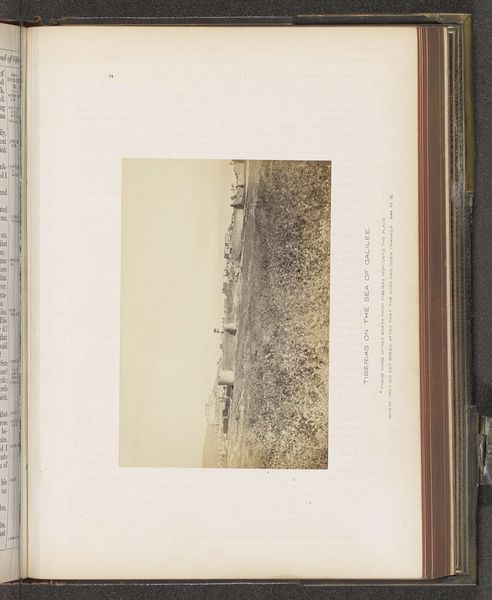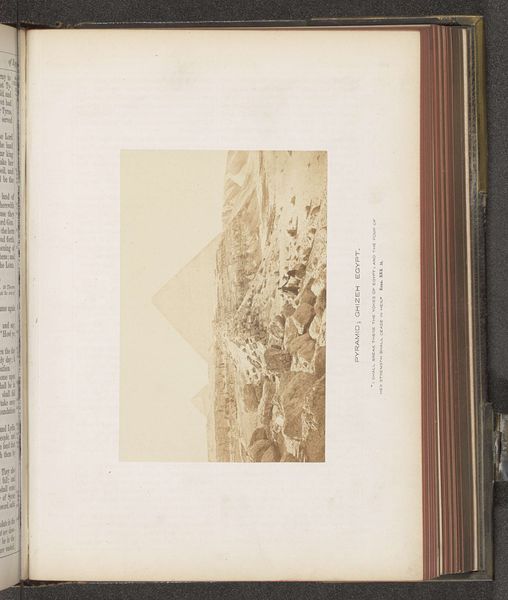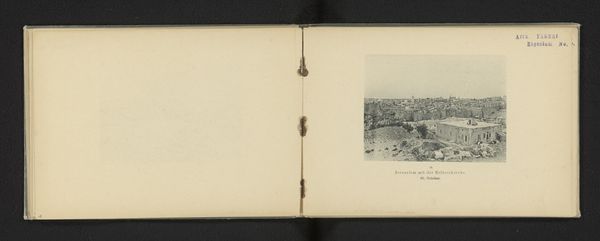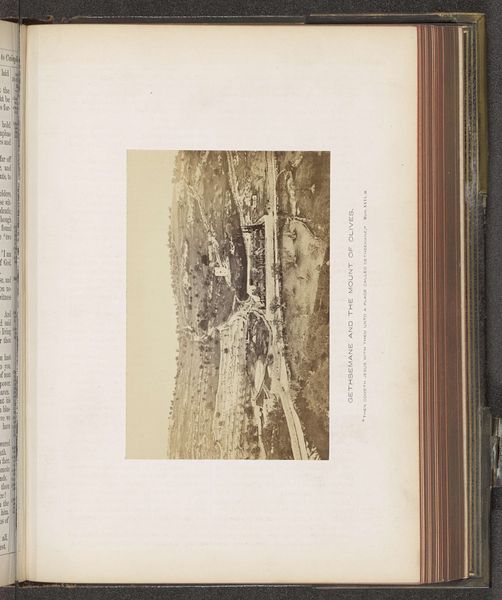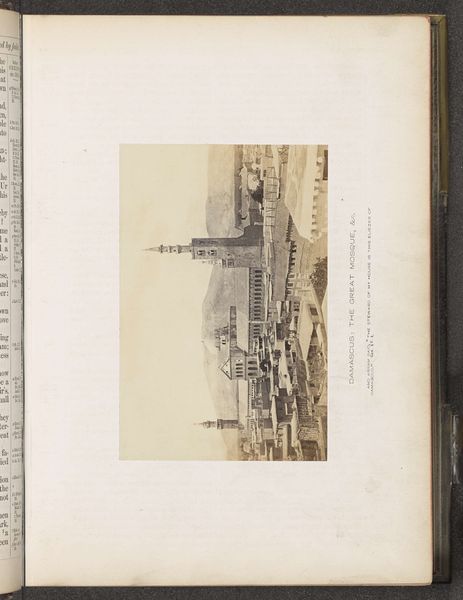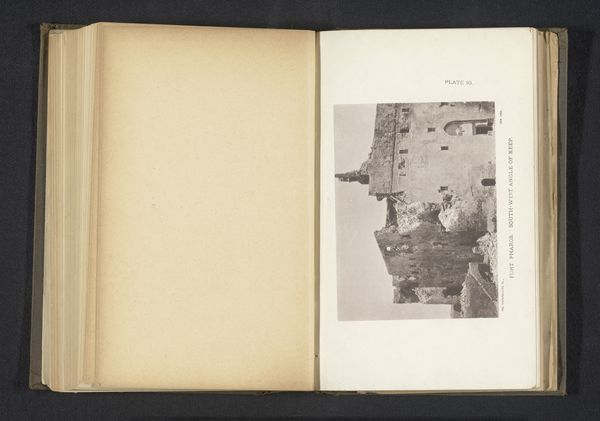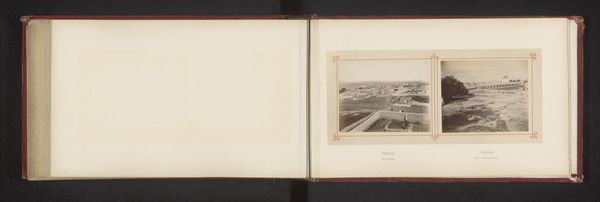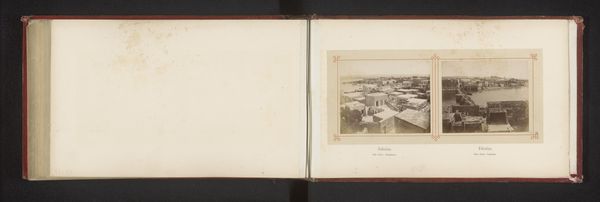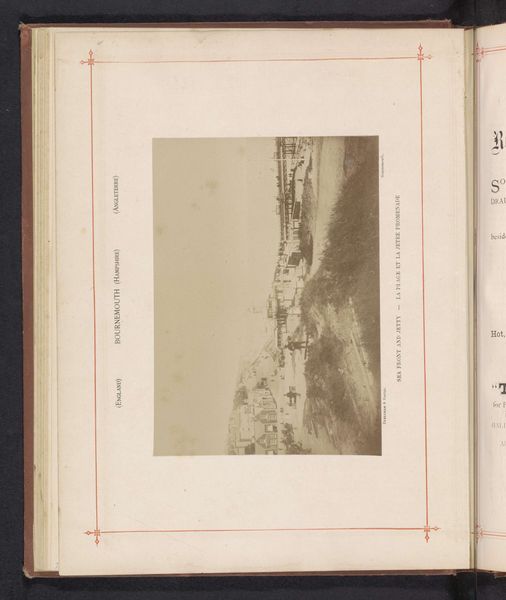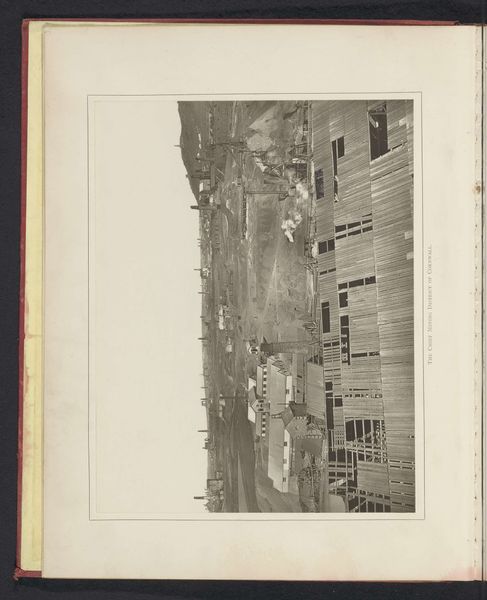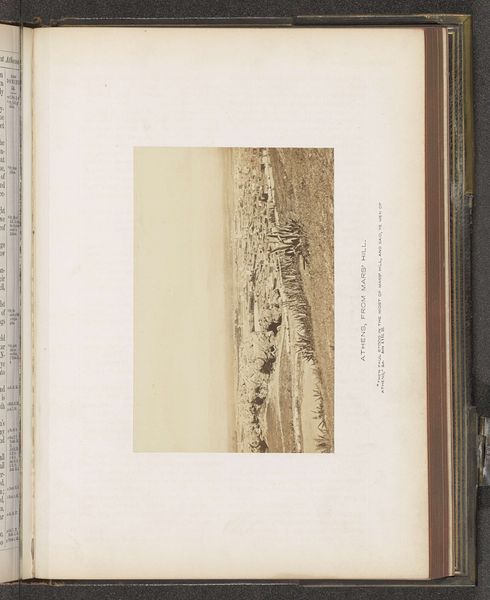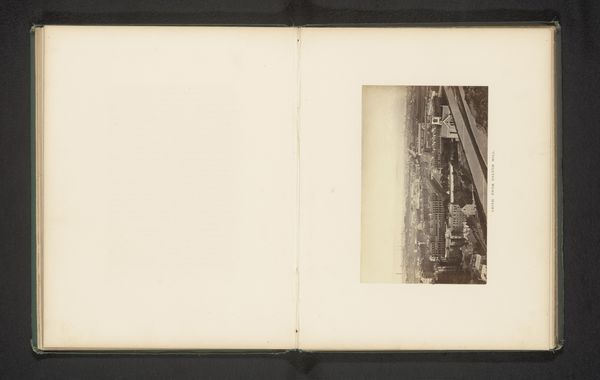
Gezicht op een waterreservoir in Jeruzalem, bekend als The Pool of Hezekiah c. 1850 - 1865
0:00
0:00
print, photography, gelatin-silver-print
# print
#
landscape
#
photography
#
orientalism
#
gelatin-silver-print
#
cityscape
Dimensions: height 105 mm, width 157 mm
Copyright: Rijks Museum: Open Domain
Curator: It's remarkable how photography can transport us. This gelatin-silver print, captured between 1850 and 1865 by Francis Frith, shows us the Pool of Hezekiah in Jerusalem. What's your initial impression? Editor: Dust. History clinging like dust motes in the air. It feels heavy, solid... enduring. But also incredibly still. It's a landscape, yes, but the built environment dominates, it's more a cityscape really. Curator: Yes, and that sense of permanence is deliberate. Frith wasn't just documenting; he was creating a vision. The Pool itself is an ancient reservoir, mentioned in the Bible. His choice to depict it anchors Jerusalem in a deep cultural and religious memory. Notice how the pool itself is foregrounded? Editor: It's almost… a stage. Waiting for actors to arrive. A symbol ripe for interpretation, but still quiet, expectant. Are we meant to consider the passage of time, and human stories reflected in its waters, the hopes and dramas playing out around this basin over the centuries? It’s almost overwhelmingly meaningful. Curator: Precisely. The pool becomes a symbolic vessel for the city's narratives. Its stillness invites contemplation. The photograph’s aesthetic leans into orientalism, reinforcing European notions of the Holy Land at the time, an effect he would've intended and managed using the equipment of the day. Editor: So he’s both witness and storyteller. I suppose every picture does tell a story... It’s like peering back in time, seeing this ancient city through a Victorian lens. I feel the artist filtering what he saw, not showing us reality in a purely objective form. The way the light hits the stone... There's a real craft to it, staging history. I'm getting lost now in all those sun-baked rooftops, those countless individual stones composing the urban fabric in their eternal dance between light and shadow... Curator: That balance—the timeless architecture with the photographic present—is precisely where its power lies, I think. Editor: Makes me wonder what Jerusalem would be like if Frith returned with a modern camera. Curator: I agree. The contrasts could yield extraordinary perspectives on continuity and change. Editor: Food for thought indeed.
Comments
No comments
Be the first to comment and join the conversation on the ultimate creative platform.
